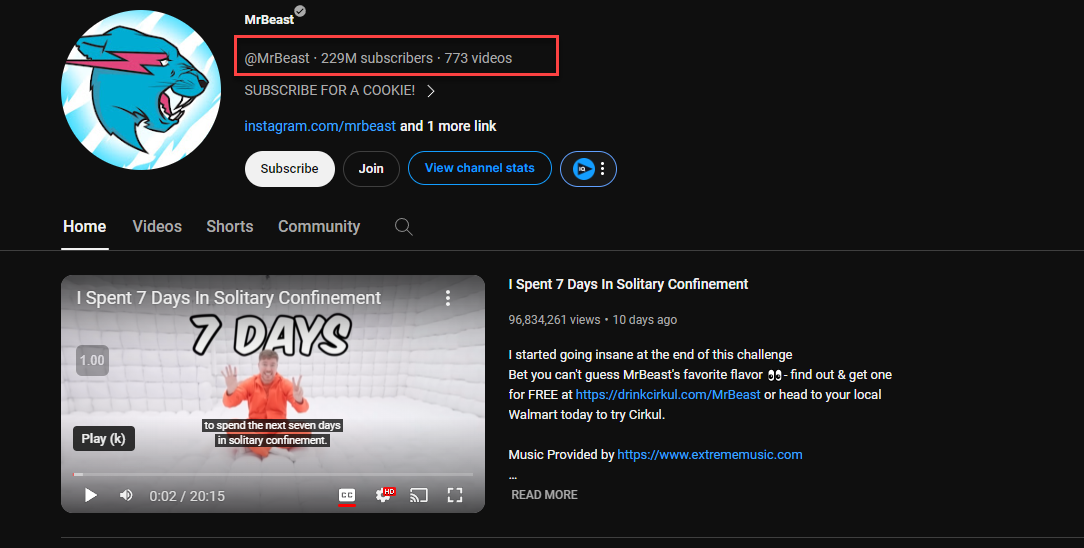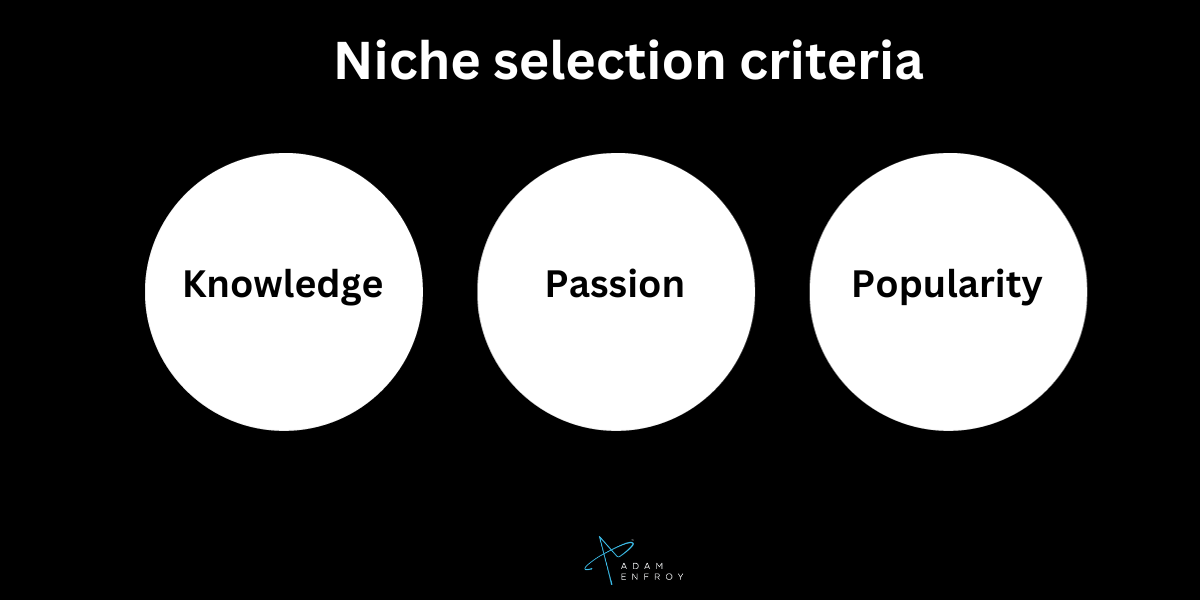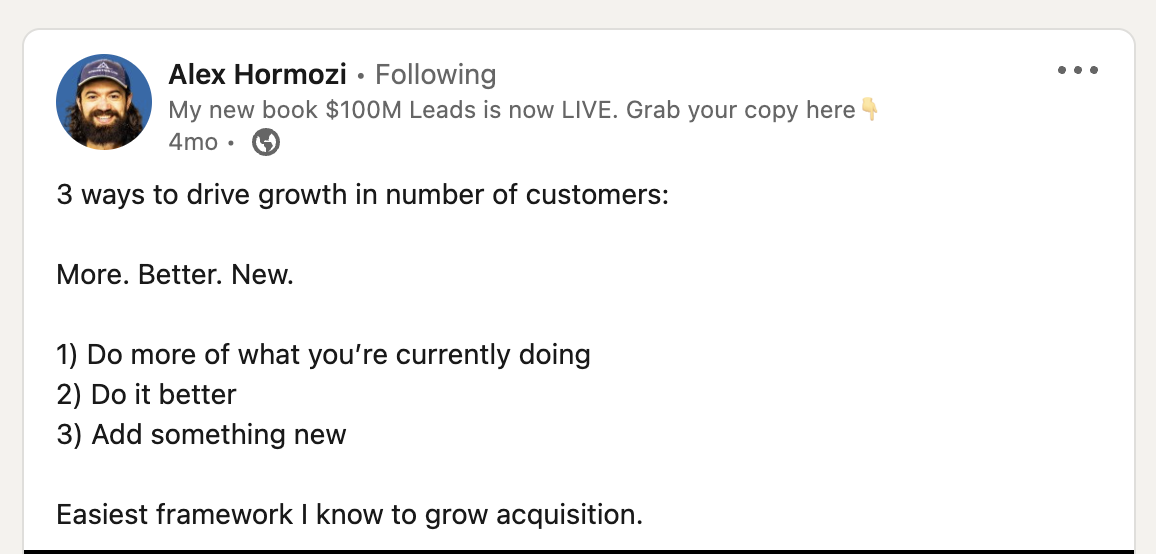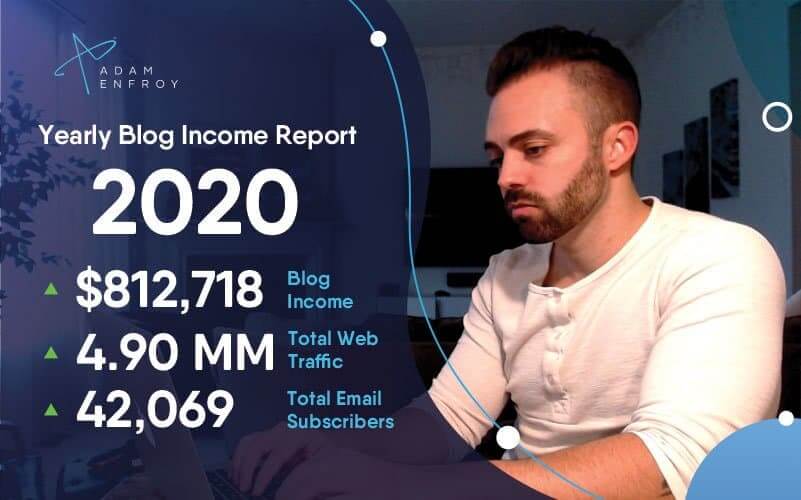How to become a content creator: 5 steps to success

There are a lot of ways to become a content creator.
Knowing the how is directly related to the type of creator you want to be:
- Do you want to start a blog and publish articles?
- Do you want to create videos for your YouTube channel?
- Are podcasts more your thing?
- Or do you prefer going down the social media path (TikTok is currently the market leader here.)
There are many possibilities. However, it’s never a good idea to focus on them all right at the beginning..
Instead, use the power of focus. Choose a core platform and base your content on becoming successful on that platform.
Here’s how you can do it.
Content creators follow these 5 steps
Before I get into the details, here’s a quick reality check:
Monetizing your content is much more important than hitting vanity metrics.
You might think content creators with thousands (or millions) of subscribers are laughing all the way to the bank. That’s not always the case.
Your goal should be to build a community of loyal followers who look forward to the next piece of content you produce. As you build up these real followers, you can offer them more valuable content and start charging them money—which is what business is all about.
At the end of the day:
- Subscriber counts
- Likes
- Follows and
- Shares
do not put money on your table. Focusing on business income does.
Let’s say you decide to create a YouTube channel. It would be nice to have a subscriber count like Mr. Beast.

Source: youtube.com
Is that possible? Sure. Is it likely? Not so much.
Having a small number of high-quality subscribers can still give you a high income.
With that out of the way, here are the 5 steps to becoming a content creator.
1. Choose your Niche
This is crucial to content creation success. Knowing your audience means knowing what type of content will resonate with them.
Here are some questions to consider:
- What do they want and need in their lives?
- What do they desire?
- What are their pain and pleasure points?
- How can you help them through your content?
Let’s break niche selection into three smaller sections:

Knowledge
Your knowledge plays an important part in niche selection. They say it’s tough to give from an empty cup and when it comes to knowledge, that’s certainly the case.
I feel some content creators often try to give from an empty cup. They might be doing this because they just want to put out content, are after a quick buck, or just don’t know any better.
The problem is that people are quickly becoming aware and can separate fluff content from valuable content. If your audience puts you in the former category, you’re pretty much done before even starting.
In other words, they won’t be coming back.
So make sure you pick a niche you actually know something about so you can share your expertise with your audience.
Passion
Your passion is also something to consider when choosing a niche.
Can you write/create videos/record audio/a mix of all for the next several years? Or will you burn out and run out of ideas within a few months?
Being passionate about your niche isn’t the end-all-be-all in terms of selection but it’s an important consideration.
Popularity
Figuring out what’s trending (and ideally will be popular for the next few years) is also a good consideration. You might have all the passion and knowledge about a topic. But if no one is interested, you’re just shouting into a void.
Not a good strategy.
2. Decide on the content type
Within your chosen platform, there might be different content types to focus on.
If you go with YouTube, you can create long and short-form videos. Both have their pros and cons. With long-form, you can dive deeper into your topics but not everyone will give you the time of day (at least not at first).
With shorter content, it’s easier to create hard-hitting content and deliver it in a way that leaves people wanting more. However, you’ll be competing with everyone else for audience attention.
Going with a social media platform, for example, means you can create text-based posts, images, and even videos.
While choosing podcasting as a content creation method means you could also record the video version and post it.
There are lots of possibilities.
Similar to choosing one platform and sticking to it, I suggest doing the same with your content type. Pick one, make it work for you, and only then consider moving to the next one.
3. Find repeatable frameworks for consistency
“Fun” fact: The average day of a content creator doesn’t look THAT impressive. Creating content involves work. There I am, stating the obvious.
That’s not to say there won’t be time for the fun stuff the lifestyle brings.
However, the truth is that what takes someone from bad to good, from good to great, and from great to world-class is their consistency.
Consistently creating content (even when the outputs don’t yet match your expectations) is fundamental.
Want to know what consistency looks like? Here’s a video that just popped up on my YouTube homepage:
Having a plan involving content creation for 10 straight years is no joke. It’s also something that not many will be able to follow through. And that is why having frameworks is important.
Personally, having such frameworks means I don’t have to recreate the wheel with each piece of content I produce. I take what already works and use it to get results. Once I’m happy with my process (and only then), I add my twist to it.
What does this look like in the real world? Here are a few simple examples:
|
Task |
Framework |
|---|---|
|
Creating blog posts |
Follow an introduction, use multiple H2 headers and H3 headers as needed, conclusion. Reference external links to add credibility and internal links to provide more information. |
|
Creating YouTube videos |
Have an intro with a hook, the main topics along with stories to emphasize specific points, and a conclusion with a possible cliffhanger to the next scheduled video. |
|
Doing video editing |
Have a series of basic cuts and transitions to rely on. Use the same text and caption format to speed up work. |
|
Use storytelling/copywriting formulas |
Use copywriting formulas (for example, the AIDA – Attention, Interest, Desire, Action) formula) in content creation. These formulas help engage the audience without having to create something from nothing. |
The above are just basic frameworks that add structure to content creation. The more time and detail you put into your frameworks, the more consistent (and better) the final output will be.
4. Find the right support
A community can help you get there faster. Whether it’s a one-to-one mentor or a group of like-minded people, support is essential.
In our Blog Growth Engine course, we offer a 2000+ person community filled with live sessions, feedback through questions and answers, and a course that’s consistently updated. All of these help people hit their blogging goals.
The same applies to our YouTube Growth Engine course. Community support is included in this course.
The result?
Content creators worldwide can ask questions, bounce ideas off each other, hit goals together, and make the process more enjoyable.
5. Monetize your content
Until you make money from it, you don’t have a content creation business.
Whether you:
- sell affiliate products through recommendations
- have sponsors pay you for mentions
- make money through ads
- sell your own products
- or any of the above combinations
…a business must make money.
Realistically, you can’t use all the methods at once. However, you should aim to include as many of them in your business as soon as it makes sense.
Don’t let these content creation challenges stop you
The content creation path isn’t always easy. Here are some challenges you’ll likely face when creating content (and how to overcome them).
Shyness about pushing the publish button
Caring about other people’s opinions has probably ended more dreams than any other factor.
Here are two, hard-to-believe truths:
- Number one: As you’re starting out, no one really cares.
- Number two: As you start finding success, no one who cares actually matters.
Similar to shyness, you might worry about “lack of a professional look”, including not having the best lighting, microphone, or camera. Here are some ideas to overcome camera shyness.
Also, here’s another truth: As long as you provide your audience with valuable content, there’s only one thing to do: Feel that shyness (substitute with any negative emotion here) and do it anyway.
Lack of content ideas
Ideas are everywhere—if you look in the right places:
- use SEO keyword tools
- create content based on your experience
- collaborate with others
- take ideas from other industries
- brainstorm with your audience
There’s always something to create content about.
I think blaming a lack of ideas as the reason for not creating content isn’t a valid excuse. If you really feel this is the case, I suggest reevaluating your chosen niche.
Lack of engagement
There might be a few reasons for this. If you’re starting out, chances are that no one knows who you are, which leads to a lack of engagement.
The solution? Keep publishing (consistently) and always look at your analytics to see what’s working.
The numbers won’t lie. Even if some content out-performs by a small margin, do more of what works and drop what doesn’t.
At the same time, focus on developing your skills. Are people dropping off within the first 3 seconds of your videos? Create better hooks.
Are people then dropping off mid-way? Use better stories to keep them engaged.
Are people not clicking on your YouTube links? Use better calls to action that are benefit-driven.
Lack of engagement is generally the effect, not the cause of the problem. Studying why you’re getting this effect is the way to solve the cause.
Taking things to the next level—more, better, new
Let’s say you’ve become a content creator. You create regular, high-quality content on your chosen platform. People enjoy what you produce and want more. More importantly, you feel you can do more.
And that is exactly what you should do first. More of what you’re doing—the stuff that works.
Once you’ve exhausted the possibilities, focus on doing better. Create better content, make it more appealing, add better transitions, include B-roll in your videos, and explore better ideas. There are endless ideas for creating better content.
Then, do new. Consider a new platform, take on topics you’ve never taken on before.
As content creators, I feel we’re too fast to jump into something new when we can do better or even more. So, make sure you don’t get too ahead of yourself.
This approach is something that Alex Hormozi came up with and consistently talks about. He uses this model to increase the number of customers but I believe you can apply it to content creation as well.

Image credit: linkedin.com
After all, if you’re building a content-based business, you will want to increase your loyal followers in order to turn them into customers. And the more loyal customers you have, the better the business.
Focusing on the new
Doing more and better is somewhat straightforward. The new might involve a bit more thought. Here are some possible ideas to help you combine platforms as a way to reach more people through your content.
YouTube Shorts, Instagram Reels & TikToks
The rules on these platforms are pretty similar. At the time of writing, there’s a variation in the maximum time your short videos can be, but everything else is pretty much the same.
Using these 3 platforms allows you to post your content in multiple places without spending too much time making lots of changes to do so.
Blog & X (formerly Twitter)
Many content creators create long-form articles. They then take the main points and use them as inspiration to create X posts and threads (threads are multiple X posts underneath each other as a way of extending your thoughts).
Combining these two is a great way to build an audience on multiple platforms with little additional work involved.
Blog & YouTube
Want to make your blog posts more interactive?
Adding a video always helps. You can then post this video on YouTube and get even more reach. People who find you on YouTube can check out your blog and vice versa. Building your own platform (i.e., a blog) is also a good idea as it makes it easier to collect details (like names and email addresses) of those who want more of your content, allowing you to reach them directly.
Key takeaways
Following the steps above will not only make you a content creator but also a successful one.
With that, here are some key takeaways.
Content creation isn’t an overnight journey. It’s something you consistently do over time—even when the results don’t match your expectations.
At the end of the day, keeping your audience’s needs in mind and providing valuable content will help you build a successful content creation business.
Further reading on AdamEnfroy.com: I highly suggest you check out this article on how to get paid as a content creator. It will show you the ways you can monetize content and build sustainable sources of income.





